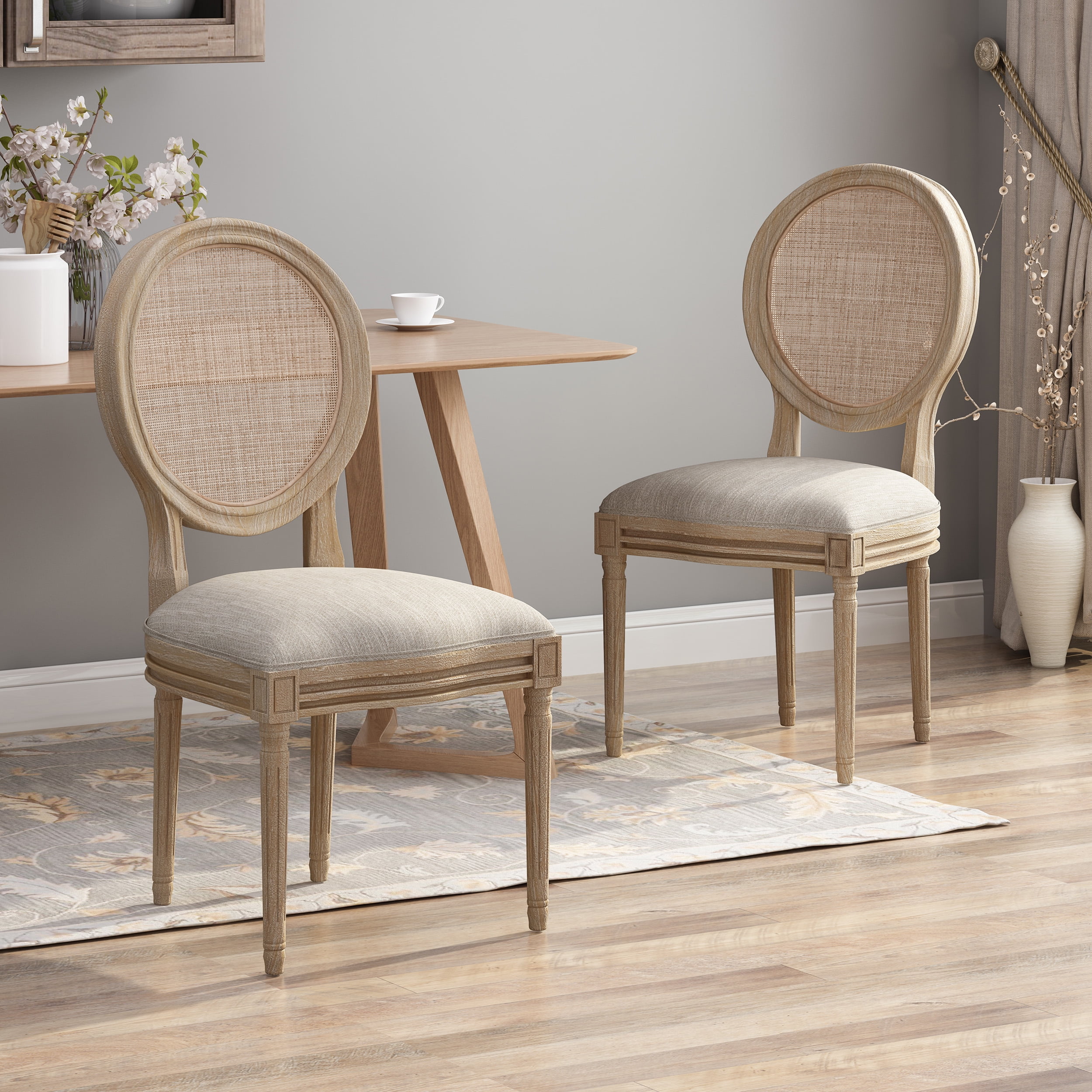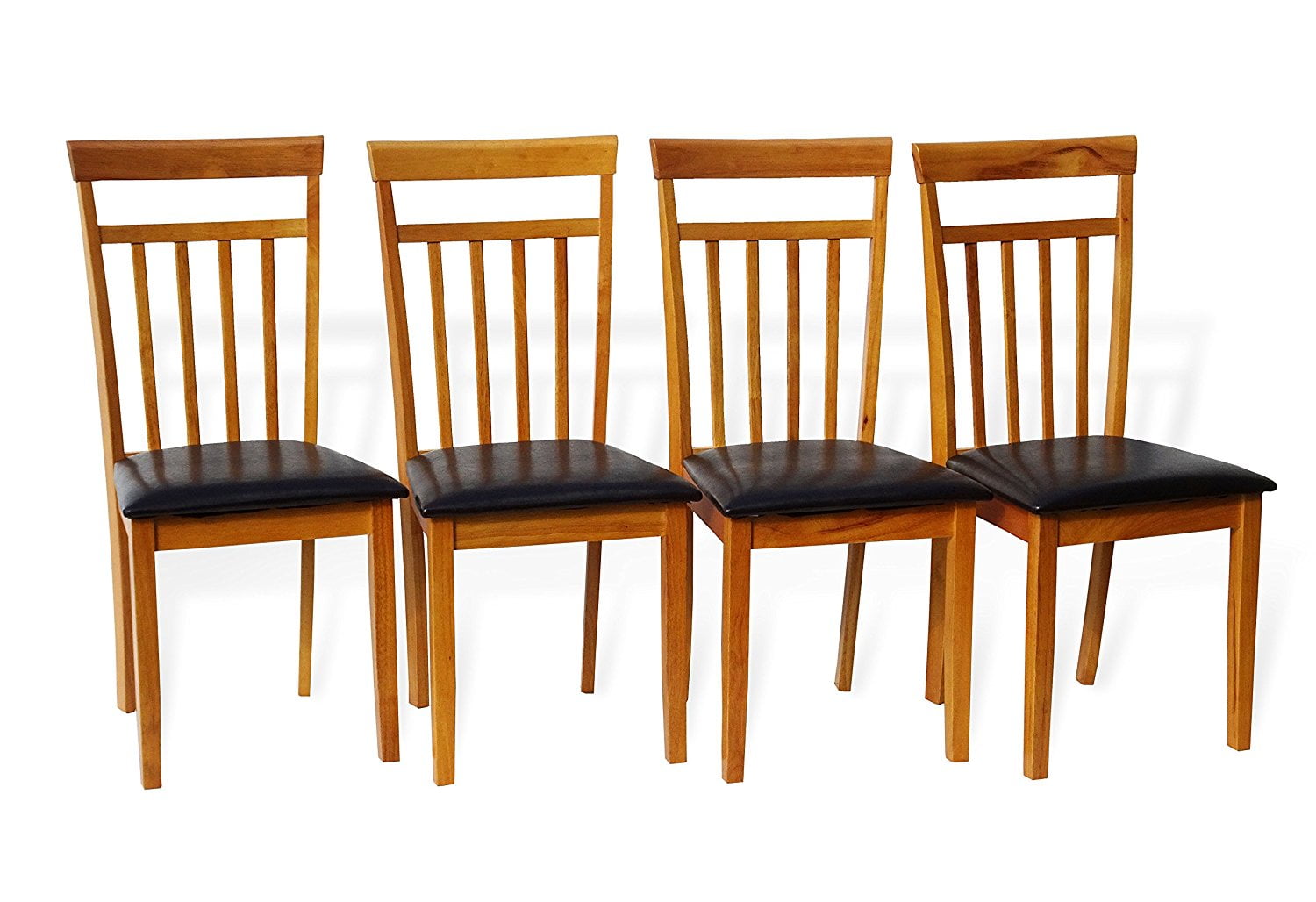Materials and Manufacturing Processes: Wood Dining Chair With Upholstered Seat

The selection of materials and manufacturing processes significantly impacts the durability, aesthetics, and overall cost of a wood dining chair with an upholstered seat. Understanding these factors is crucial for both manufacturers and consumers seeking a high-quality, long-lasting piece of furniture. This section details common wood types, upholstery materials, and a guide for reupholstering.
Wood Types for Dining Chair Construction, Wood dining chair with upholstered seat
The choice of wood significantly influences the chair’s strength, appearance, and price. Different wood species offer unique properties, making some more suitable than others for dining chairs, especially those with upholstered seats. The table below summarizes key characteristics.
| Wood Type | Durability | Grain Pattern Description | Cost Range |
|---|---|---|---|
| Oak | High; very strong and resistant to wear | Prominent, often open grain; can be straight or wavy | Medium to High |
| Maple | High; hard and dense | Fine, even grain; often exhibits a subtle figure | Medium to High |
| Beech | Medium; strong but can be susceptible to dents | Straight, fine grain; relatively uniform in appearance | Medium |
| Birch | Medium; strong and relatively hard | Fine, even grain; similar to maple but less dense | Medium |
| Pine | Low; softer and more prone to scratches and dents | Visible knots and grain; often has a rustic appearance | Low |
Upholstery Materials for Dining Chairs
The upholstery material greatly affects the chair’s comfort, longevity, and ease of maintenance. Consider these factors when choosing an upholstery fabric.
Wood dining chair with upholstered seat – Choosing the right upholstery material is crucial for both comfort and durability. Factors such as the chair’s intended use, the frequency of cleaning required, and the overall aesthetic desired will influence your choice.
- Polyester: Affordable, durable, stain-resistant, and easy to clean. However, it may not be as breathable or luxurious as natural fibers.
- Cotton: Breathable, comfortable, and relatively affordable. However, it can wrinkle easily, fade with sun exposure, and require more frequent cleaning.
- Linen: Durable, breathable, and luxurious. It can be more expensive than cotton or polyester and may wrinkle easily.
- Velvet: Luxurious, soft, and visually appealing. It can be more difficult to clean and may show stains more easily than other materials.
- Leather: Durable, luxurious, and ages gracefully. It is expensive and requires regular conditioning to maintain its suppleness.
Reupholstering a Wood Dining Chair Seat: A Step-by-Step Guide
Reupholstering a dining chair seat can be a rewarding DIY project, extending the life of your furniture and allowing for customization. This guide Artikels the process.
Before beginning, gather the necessary tools and materials: new upholstery fabric, staple gun, staple remover, measuring tape, scissors, pliers, and a screwdriver (if needed to remove the old seat).
- Remove the old upholstery: Carefully remove the staples securing the old fabric to the chair seat using a staple remover. Take note of how the fabric was originally attached.
- Measure the seat: Accurately measure the seat’s dimensions, adding extra fabric for seam allowances (typically 2-3 inches on each side).
- Cut the new fabric: Cut the new fabric to the measured dimensions, ensuring that the pattern is oriented correctly.
- Attach the new fabric: Starting at a corner, carefully stretch the fabric taut and staple it to the seat frame, working your way around the perimeter. Maintain consistent tension to avoid wrinkles.
- Trim excess fabric: Once the fabric is securely attached, trim any excess fabric close to the staples.
- Reattach the seat: If the seat was previously removable, reattach it to the chair frame.
Care, Maintenance, and Repair

Proper care and maintenance are crucial for extending the lifespan of your wood dining chairs with upholstered seats. Regular cleaning and attention to both the wood and upholstery will prevent damage and maintain their aesthetic appeal. Neglecting these aspects can lead to costly repairs or premature replacement. This section details practical steps for maintaining your chairs and addressing common issues.
Upholstery Cleaning and Maintenance
The cleaning method for your chair’s upholstery depends entirely on the material. Different fabrics require different approaches to avoid damage. The following table summarizes suitable cleaning methods for common upholstery materials.
| Upholstery Material | Cleaning Methods |
|---|---|
| Cotton | Vacuum regularly to remove dust and debris. Spot clean spills immediately with a damp cloth and mild detergent. For deeper cleaning, consider professional upholstery cleaning. |
| Polyester | Generally durable and easy to clean. Vacuum regularly and spot clean spills with a damp cloth and mild detergent. Many polyester fabrics can be machine washed (check care label). |
| Linen | More delicate than cotton or polyester. Vacuum gently and spot clean with a damp cloth and mild detergent. Avoid harsh scrubbing. Professional cleaning is recommended for deep cleaning. |
| Leather | Wipe clean with a damp cloth and a leather cleaner specifically designed for furniture. Avoid harsh chemicals and excessive moisture. Condition leather regularly to maintain its suppleness. |
| Microfiber | Usually stain-resistant. Vacuum regularly and spot clean spills with a damp cloth and mild detergent. Many microfiber fabrics are machine washable (check care label). |
Common Problems and Solutions for Wood Dining Chairs with Upholstered Seats
Several issues can arise with wood dining chairs and their upholstered seats. Addressing these promptly can prevent further damage and maintain the chair’s structural integrity and appearance.
- Problem: Loose joints in the wood frame.
Solution: Tighten loose screws or use wood glue and clamps to re-secure the joint. For severely damaged joints, professional repair may be necessary. - Problem: Scratches on the wood surface.
Solution: Minor scratches can be buffed out with a wood polish or filled with wood filler before refinishing. Deeper scratches may require more extensive repair, potentially including sanding and staining. - Problem: Upholstery stains.
Solution: Address stains immediately using appropriate cleaning methods for the upholstery material (see table above). For stubborn stains, consider professional upholstery cleaning. - Problem: Fabric tears or rips in the upholstery.
Solution: Small tears can sometimes be repaired with fabric glue or a sewing kit. Larger tears usually require professional upholstery repair or replacement. - Problem: Sagging or worn upholstery.
Solution: Re-upholstering the seat is necessary to restore its shape and comfort. This is best done by a professional upholsterer.
Repairing Minor Wood Frame Damage
Minor damage to the wood frame, such as scratches or loose joints, can often be repaired at home. The following steps Artikel how to repair a scratch and fill minor imperfections.
- Assessment: Evaluate the extent of the damage. For deep scratches or significant damage, professional repair may be necessary.
- Preparation: Clean the affected area thoroughly with a damp cloth. Allow it to dry completely.
- Filling Imperfections: Apply a small amount of wood filler, matching the wood’s color as closely as possible, to the scratch or imperfection using a putty knife. Smooth the filler level with the surrounding wood.
- Drying: Allow the wood filler to dry completely according to the manufacturer’s instructions. This usually takes several hours.
- Sanding: Once dry, gently sand the filled area with fine-grit sandpaper (e.g., 220-grit) to create a smooth surface. Sand carefully to avoid sanding away too much wood.
- Refinishing: Apply a wood stain or finish to match the existing finish on the chair. Follow the manufacturer’s instructions for application and drying time.
Necessary tools and materials include fine-grit sandpaper, wood filler, a putty knife, a damp cloth, wood stain or finish, and protective gloves.
